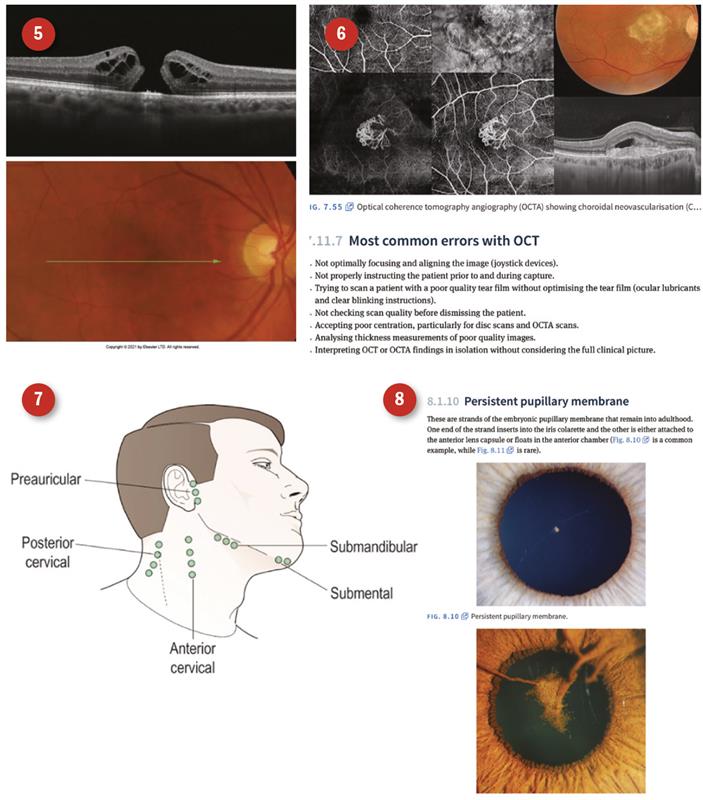
Since I acquired the 2nd edition of Clinical Procedures in Primary Eye Care, over 20 years ago, I have always kept my copy nearby in clinic. Clarity of explanation and a reliance on evidence based science have always been Elliott’s trademarks. So much so that my book finally disintegrated early last year, So, I was more than pleased to receive the latest (5th) edition recently and am delighted that the book and a whole host of extra content can be accessed on my iPad, something I find incredibly useful in practice, whether reminding myself of something, explaining something to a patient or helping a student.
What is new?
The main reason for buying the latest edition of this book is, in my view, the access to a digital version of the text and the extra digital content that comes with it. This includes high quality videos demonstrating a wide range of techniques, ranging from soft lens removal (figure 1), retinoscopy (figure 2), and, the student’s favourite, focimetry (figure 3), through to more advanced techniques such as headset BIO and gonioscopy. I especially liked the communication videos, showing examples of history taking for a range of patients and how best to explain concepts such as cataract. CLOs as well as optometrists should find the slit-lamp images and videos of, for example, fluorescein fits of a range of rigid lenses (figure 4) and dry eye assessment (including the latest TFOS DEWS2 information) of great interest.
 Figures 2, 3 and 4.
Figures 2, 3 and 4.
To help keep you keep up to date in a changing world with ever-increasing use of modern imaging technologies, there is an extensive section focusing on OCT use and interpretation (figure 5), including newer developments such as OCT angiography (figure 6). In fact, the overview of OCT use is an excellent starting point for anyone wishing to develop their OCT skills. At the other end of the spectrum, there are explanations of medical procedures including carotid auscultation and checking for lymphadenopathy (figure 7).
 Figures 5 - 8.
Figures 5 - 8.
The extensive library of images of ocular disease is impressive (figure 8) and will be an absolute boon in discussing findings with patients in the future. I hope my tablet is more resilient than the old paperback book proved to be.
• Clinical Procedures in Primary Eye Care by David B Elliott, Fifth Edition, Elsevier.
